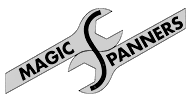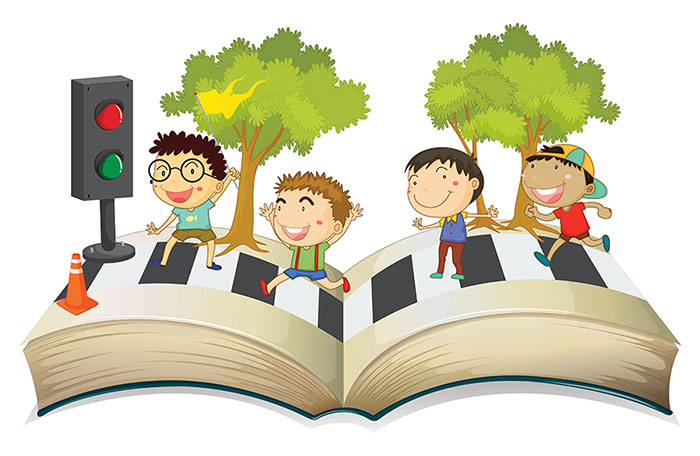
- Free Call 1800 696 324
- enquiries@magicspanners.com.au


Car and road safety guide for kids
There are many important factors to consider when thinking about road safety for kids. As a responsible adult, there are lots of things you can do – both at home and outdoors – that can increase your child’s safety and help to prevent the threat of danger. When dealing with children’s safety, it is helpful to remember some key characteristics. Children want to be independent; they don’t always want to hold an adult’s hand. It is vital that they understand the safety reasons behind such behaviours. As well as this, children can also be easily distracted, so they need to understand what to look out for on the roads. Children are small and fast, and this means they can be hard for drivers to see in traffic and can move from safety to danger in an instant. As adults, it is crucial to remember that every child is different – what may work for one child might not work for another.
Staying Safe on the Road
Although roads and driveways can be dangerous places, the risk can be greatly reduced by taking some simple and consistent steps. First and foremost, children should always be closely and actively supervised. It is also important to talk about road safety in ways your child can understand. Begin this process by telling them where it is safe to walk and cross the road, car park or driveway. Help them grasp your family’s road safety rules by regularly reminding them:
- When it is safe to walk and cross
- Why we need to stop and wait
- What to look for
- What to listen for
- Why we have to keep checking until we are safely across the road
“Hold a grown up’s hand”
If an adult demonstrates safe behavior, it is likely that the child will follow suit. Always make sure to hold hands when around roads, car parks or driveways. This will teach your child safe behavior, protecting them from danger and helping them become safer pedestrians.
Safety in the Car
Before driving, make sure all the children in the car are buckled up in car seats or restraints that are correct for their age. As an exemplary adult, it is also important that you always wear your seat belt. Do not drive until all seat belts are done up, and make sure your child knows that car seats and seatbelts keep us safe.
“Watch Out, Cars About”
Always ensure children use the safety door – that is, the car door closest to the curb. Keep the temperature in the car cool, and never leave your child or pet unattended in the car. Leaving a child unattended is illegal, and is punishable by law. Children should always sit in the back seat, with their arms, legs and head safely inside the car when it is moving or parked on the side of the road. Activate childproof locks to help safeguard that children do not misuse windows or doors. Keep your loose items secured in the glove box or boot and refrain from having pets travel with you. Seatbelts in empty car seats should be fastened, and you can make toys, games, and books easy for children to reach by using velcro, suction caps or key rings.
While you’re driving
There are many things you can do to provide safe distractions and also help your child learn about road safety for kids whilst driving. Have a chat with your child, and position the car seat so you can see each other. Always make sure there is drinking water in the car, and stop every two hours to avoid fatigue. When your child exhibits safe road behavior, praise them for their actions.
Restraints
- 0-6 months: approved rearward-facing restraint
- 6 months – 4 years: approved rearward or forward facing restraint
- 4-7 years: approved forward-facing restraint or booster seat
You can find out more about restraint requirements at the road transport safety website or call 1322 13 to find your nearest authorised restraint fitter. If purchasing a second-hand restraint, make sure you check the age, condition and history, to ensure it is the right size, fit and the requirement for the age of the child.
Helmets
When buying a helmet, take your child to the store to ensure that it fits properly. You should be able to fit two child finger widths above the child’s eyebrows, and the helmet should be neither too tight nor too loose. As well as this, the helmet shouldn’t be too heavy for the child to carry.
“No Helmet, No Bike”
Talk to your child about:
- How helmets keep us safe
- Why we must ride and play away from traffic. For example, in the backyard or at the bike track
- Why footpaths and driveways are never safe to play
- Why it is never safe for young children to ride their bikes without an adult closely supervising them
Heat facts
Overheated cars can cause children to suffer rapid dehydration, hyperthermia (heatstroke), suffocation and death. Winding the window down 5cm or so, as well as the colour of the seats or interior of the vehicle, has little effect on rising heat.
It is also important to note that large cars heat up just as fast as small cars. The younger the child, the greater his or her sensitivity to heatstroke, and the faster he or she will dehydrate.
What you can do at home
Set some family rules at home about playing safely away from footpaths and driveways.
If your child refuses to hold hands, make sure he or she knows that they need to stay close by, always holding onto you, your bag or the stroller.
Another great way to learn about road safety for kids is by listening to ABC’s road safety songs.
With these helpful guidelines, you and your children will be well on your way to living a safer life around cars and roads.
As a gold coast mobile mechanic, we are exposed to the reality of these incidents frequently. We believe many of these cases can be prevented through raising awareness.
Other helpful resources
www.rms.nsw.gov.au
www.kidsandtraffic.mq.edu.au
http://roadsafety.transport.nsw.gov.au
Want to find out more about our services, or arrange for one of our expert mobile mechanics to come out to you?
Get In Touch Today